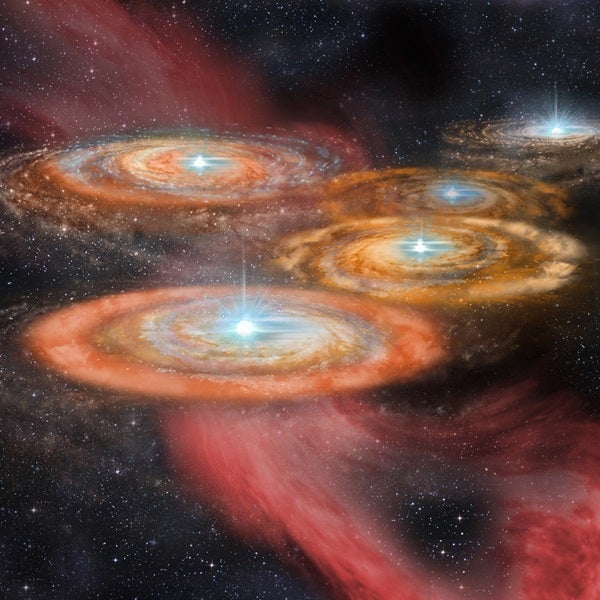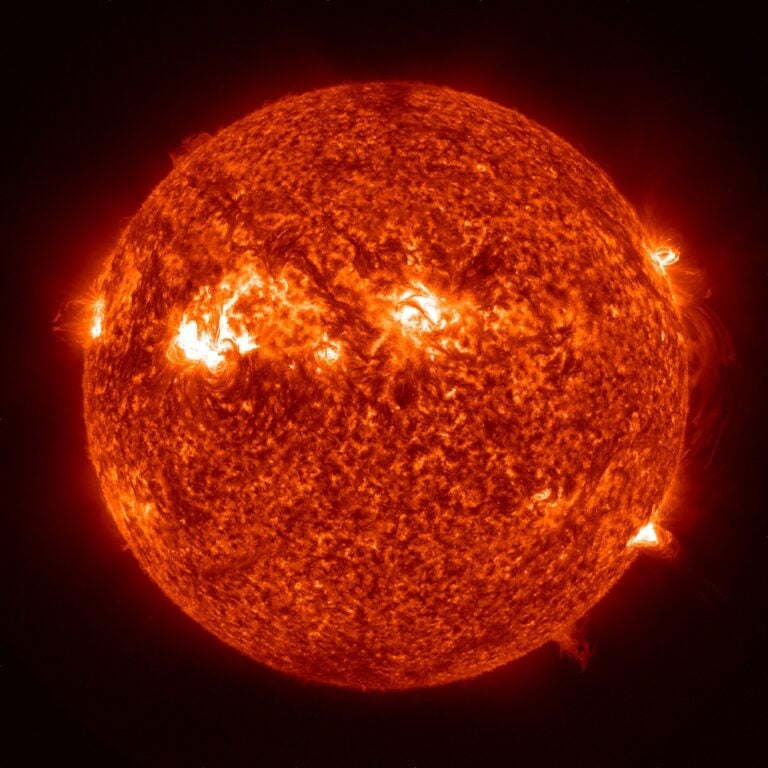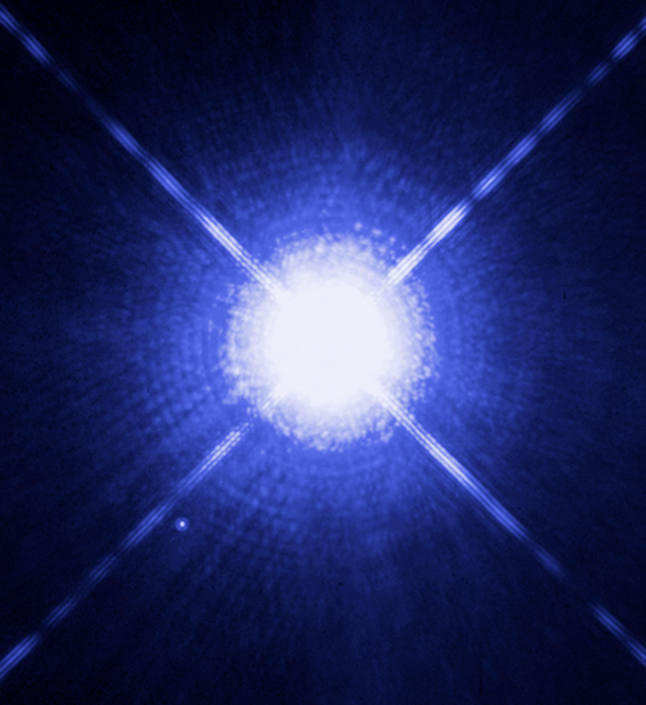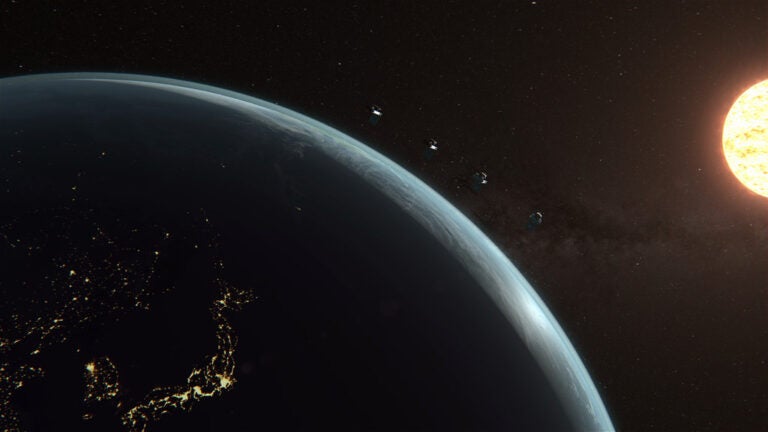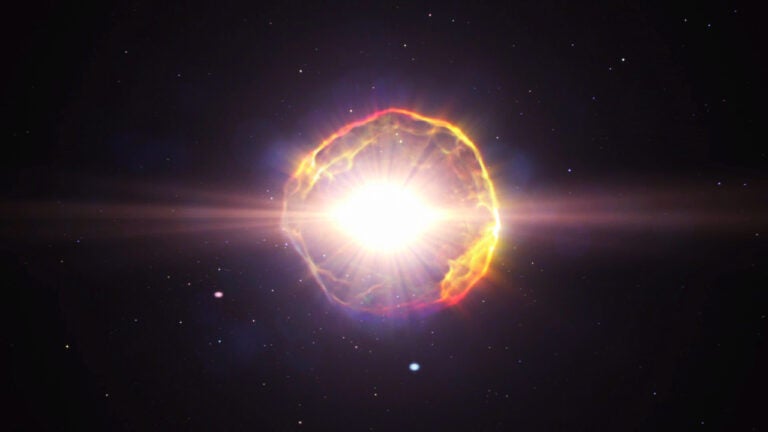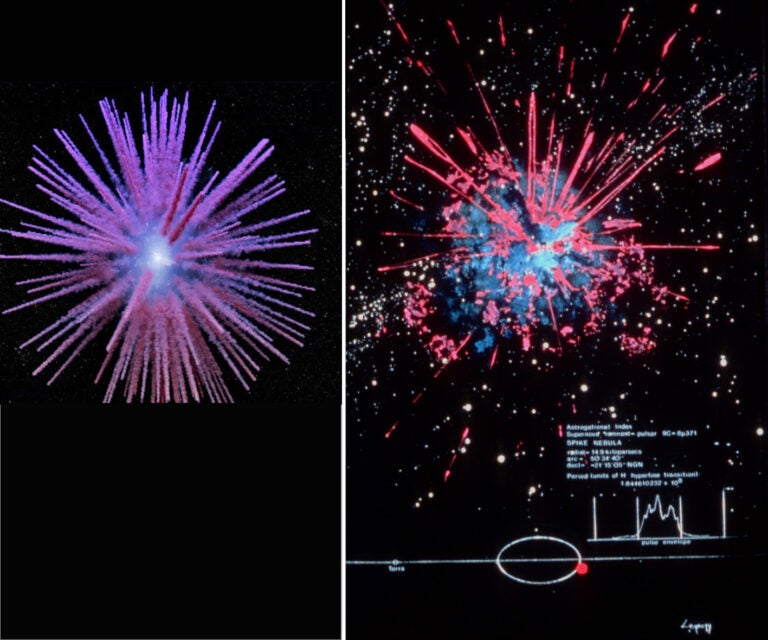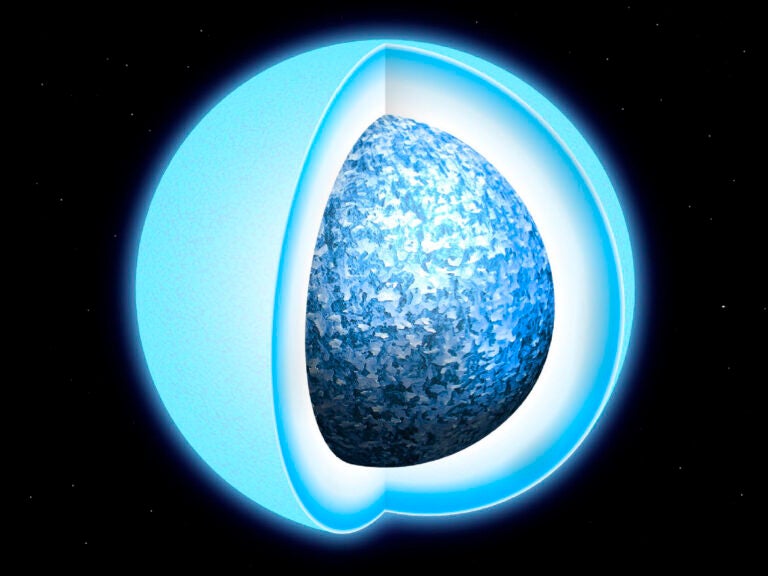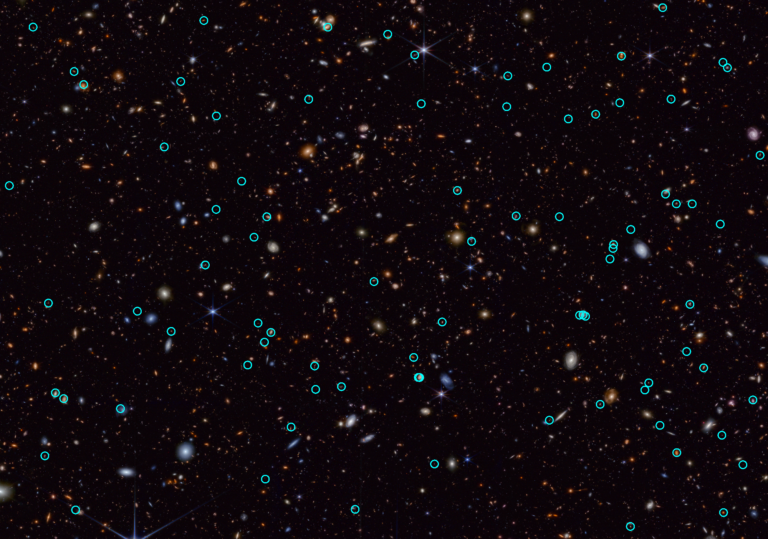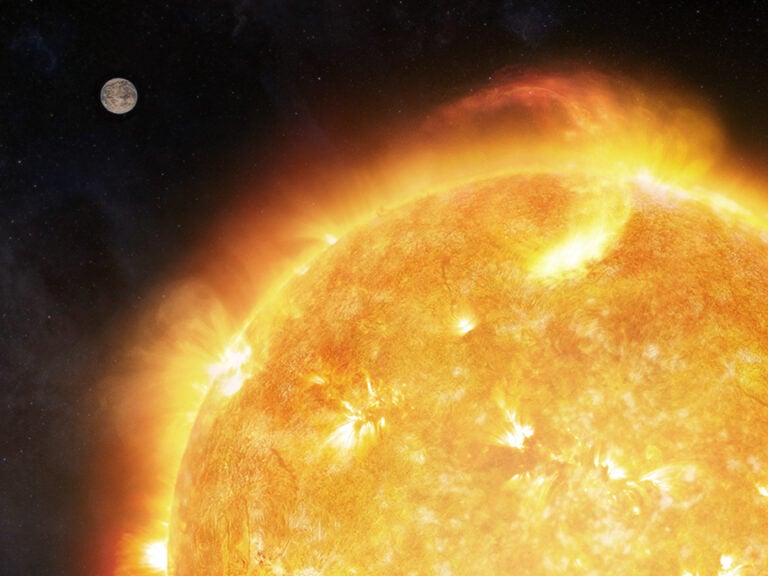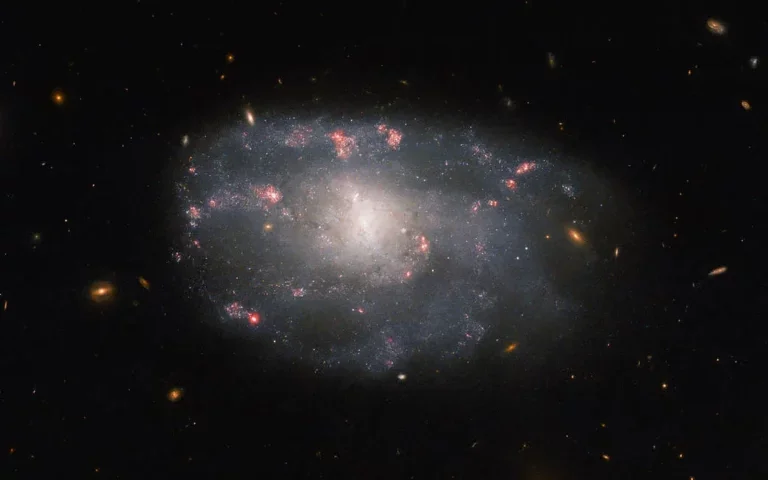The two scientists, Alexander DeSouza and Shantanu Basu, modeled how the luminosity of the stars would have changed as they formed from the gravitational collapse of disks of gas. The early evolution turns out to be chaotic, with clumps of material forming and spiraling into the center of the disks, creating bursts of luminosity a hundred times brighter than average. These first stars would have been at their brightest when they were “protostars,” still forming and pulling in material.
In a small cluster of even 10 to 20 protostars, the ongoing bursts would mean the cluster would spend large periods with enhanced brightness. According to the simulation, every so often a cluster of 16 protostars could see its luminosity increase by a factor of up to 1,000, to an extraordinary 100 million times the brightness of the Sun.
The earliest stars lived short lives and produced the first heavy elements, like the carbon and oxygen that the chemistry of life depends upon.
Light from these stars has traveled toward us for almost 13 billion years, so to observers on Earth they look very faint and also have their light stretched out into infrared wavelengths by the expansion of the universe. This makes these stars very hard to observe, but the next-generation James Webb Space Telescope (JWST) will survey the skies to look for them. Although the luminosity of an individual first star is probably too faint for JWST to spot it, the new work suggests that clusters of the first protostars could be prominent beacons in the early universe.
“Seeing the very first stars is a key science goal for JWST and part of astronomers’ quest to track the history of the cosmos,” said Basu. “If we’re right, then in just a few years’ time we could see these enigmatic and dazzlingly bright objects as they came into being and lit up the universe around them.”

